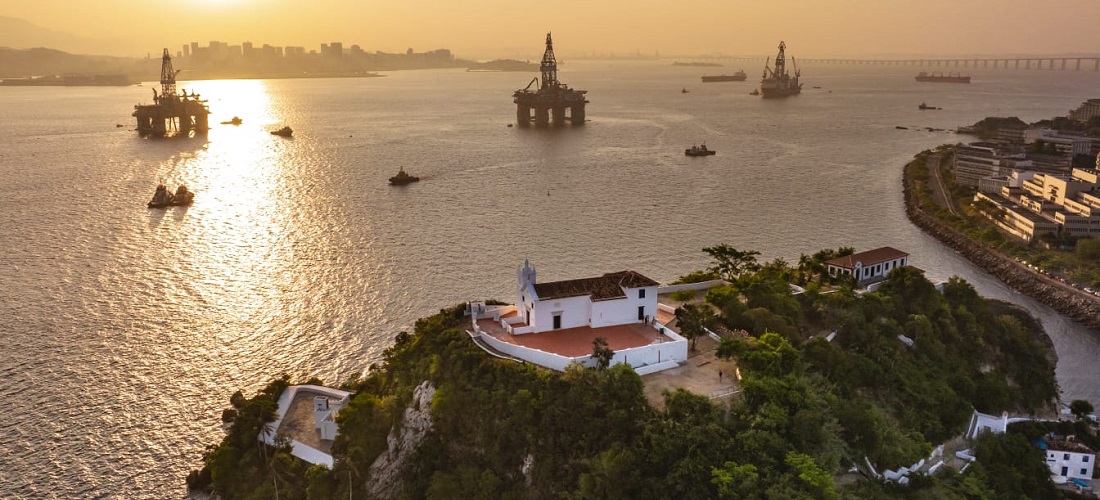
Rio’s CDRJ administration sets targets to end current financial disarray
Jan, 31, 2024 Posted by Gabriel MalheirosWeek 202405
As a state-owned company with a long history of leadership roles filled by political appointees, the Rio de Janeiro Port Company (CDRJ), has a new plan to “tidy up the house” in 2024. The company wants to increase revenues, maintain a steady flow of investments, address labor liabilities, and settle debts that have been leaving the public company in deficit. According to a joint report from the Ministries of Planning and Finance for the fifth bimester of 2023, the expected deficit for CDRJ was R$ 60.6 million.
CDRJ President, Francisco Martins, in office since October, states that since taking over, he has been trying to dispose of “unburied corpses” that drain the company’s resources. Among these “corpses” are about 1,200 labor lawsuits totaling over R$ 200 million and a total debt with a nominal value of around R$ 1 billion. A native of Pernambuco, Martins took over based on the recommendation of the Minister of Ports and Airports, Silvio Costa Filho.
Martins said that the company held an “account meeting” with Rio City Hall. He explained that CDRJ had a debt of R$ 600 million with the local City Hall, and, on the other hand, the city had not reimbursed the administration of the port for some buildings expropriated from the time of the Olympics. With the agreement, this debt was cleared at the end of last year, and all collection actions, from both sides, were withdrawn. “It was an important milestone, eliminating R$ 600 million of historical debt that we had,” said the company’s head.
To get the finances on track, Martins says that CDRJ plans to auction at least six areas in the ports of Rio, Niterói, and Itaguaí. In Itaguaí, for example, the public consultation for the auction of the so-called “middle area” between Vale and CSN is in the final stages. The expected private investment with the new leases is R$ 3 billion. “This time the auction will happen. There are groups of mining companies from Minas Gerais that are coming together,” he says, adding that the expectation is to have the area leased still in the first half of the year.
The company’s cargo throughput last year was around 64 million tonnes – official numbers have not yet been computed- surpassing the 61.2 million tonnes in 2022.
For the Port of Rio, one of the plans is to expand the backup area with the construction of a new support structure over Guanabara Bay, a project sensitive from an environmental standpoint. The technical and financial viability of the project will still be studied by CDRJ, but Martins states that if implemented, the project could quintuple the port’s inland area. The asset faces limitations to grow as it is squeezed between the city and the sea, with no expansion possibilities due to population density. “Today, the Port of Rio has nowhere to grow; it is suffocated [by the surrounding city],” says Martins.
The chart below uses DataLiner-sourced data to compare container imports and exports at the Port of Rio de Janeiro from January 2019 to November 2023. See further details below:
Rio de Janeiro | Exports and Imports | Jan 2019 – Dec 2023 | TEUs
Source: DataLiner (click here to request a demo)
Revenue-wise, CDRJ anticipates having reached about R$ 880 million in 2023, up from R$ 817 million in 2022. The projected amount for 2024 is R$ 900 million. The federal government provides the company’s reserves and resources, which it plans to use to invest R$ 447 million this year. Last year, it invested R$ 110 million. “We will have an investment in dredging, something the Port of Rio has not had for many years,” Martins states.
To deal with what he calls “unburied corpses,” Martins has opened negotiations with the Union Property Secretariat (SPU) to try to reduce debts. The executive states that the process is similar to what happened in Suape under his administration. He asserts that CDRJ has “restrictions,” reflected in issues such as budget execution, which was around 99% in Suape and ranges from only 10% to 15% in the federal state-owned company. Nonetheless, he sees “potential” in Rio’s ports. “The great legacy [I want in my administration] is to see a portfolio of projects,” he says, citing the need for constant dredging in the ports. Another necessary investment, according to Martins, is in technology to increase the security of CDRJ’s ports.
Valor Econômico
Clique aqui para ler o texto original: https://valor.globo.com/empresas/noticia/2024/01/31/docas-do-rio-tenta-arrumar-a-casa-mais-uma-vez-com-novo-comando.ghtml
-
Economy
Aug, 15, 2023
0
Brazilian industry wary of ‘Milei effect’ on sales to Argentina
-
Meat
Oct, 06, 2021
0
China received more than 50% of Brazil’s YTD beef and pork exports
-
Other Logistics
Feb, 19, 2021
0
Paraguay and Brazil approve specifications for Bioceanic Corridor bridge
-
Grains
Nov, 03, 2021
0
ANEC: Corn exports may surpass soybeans for the 1st time since January


